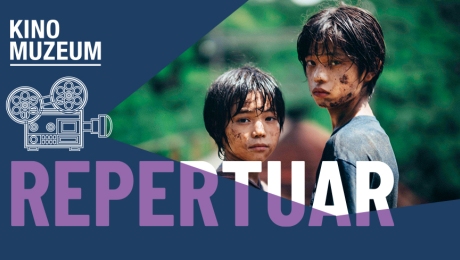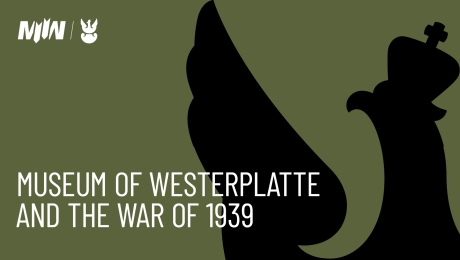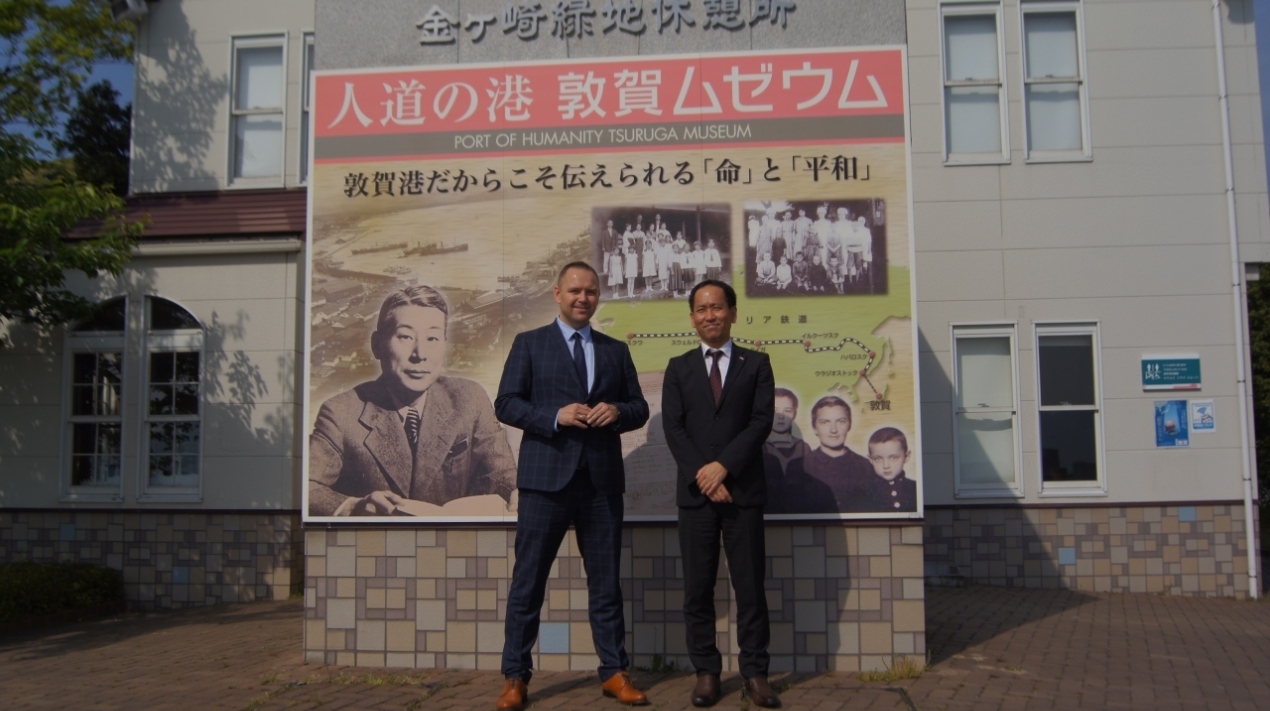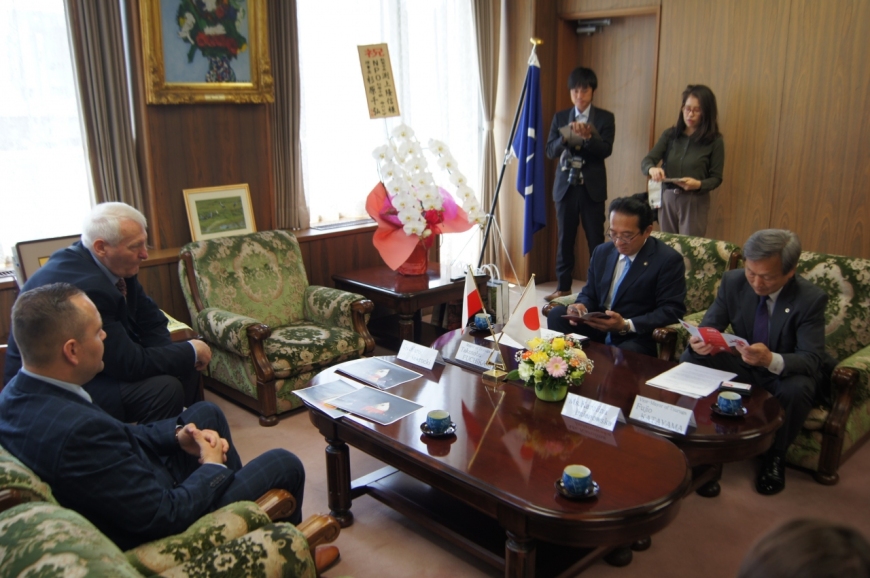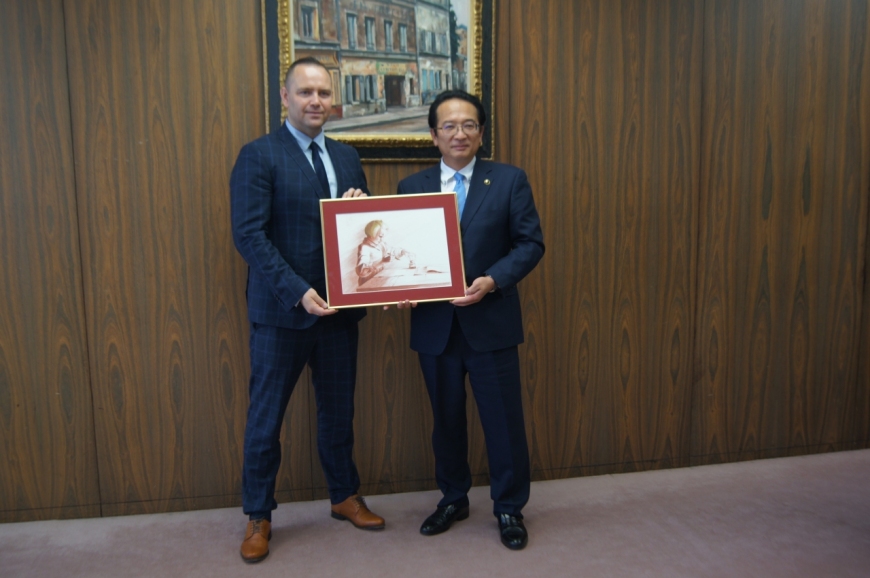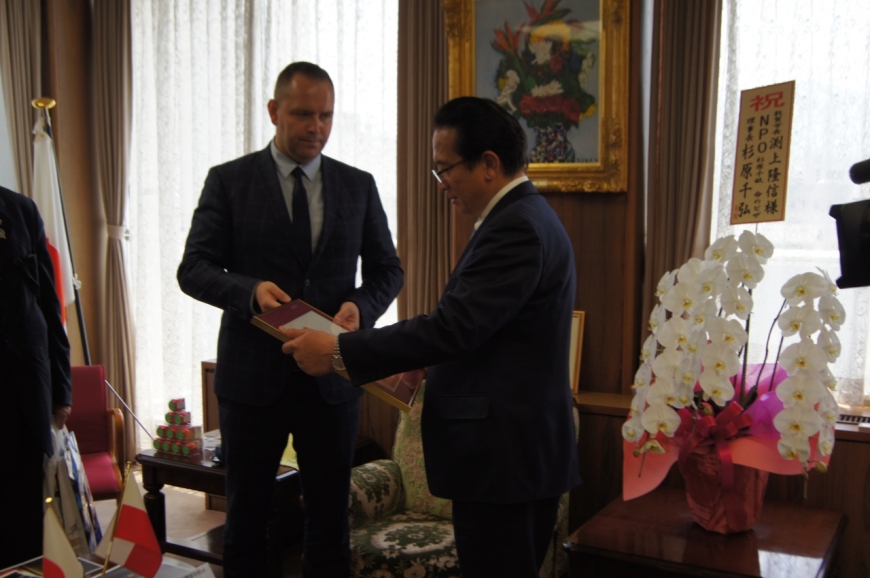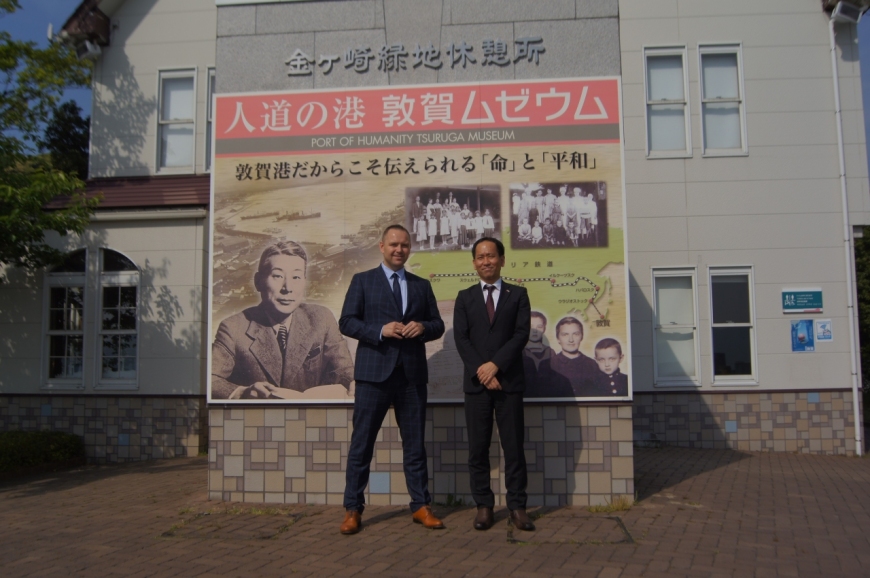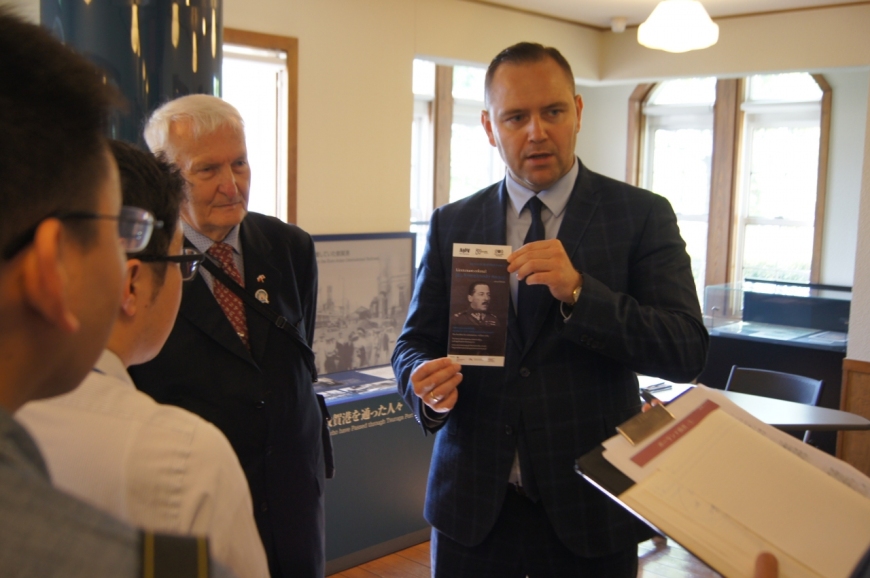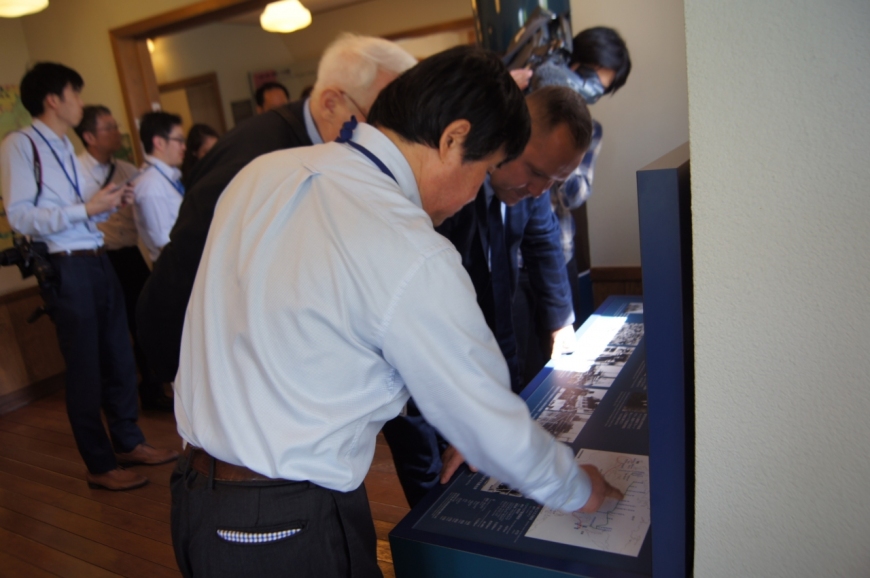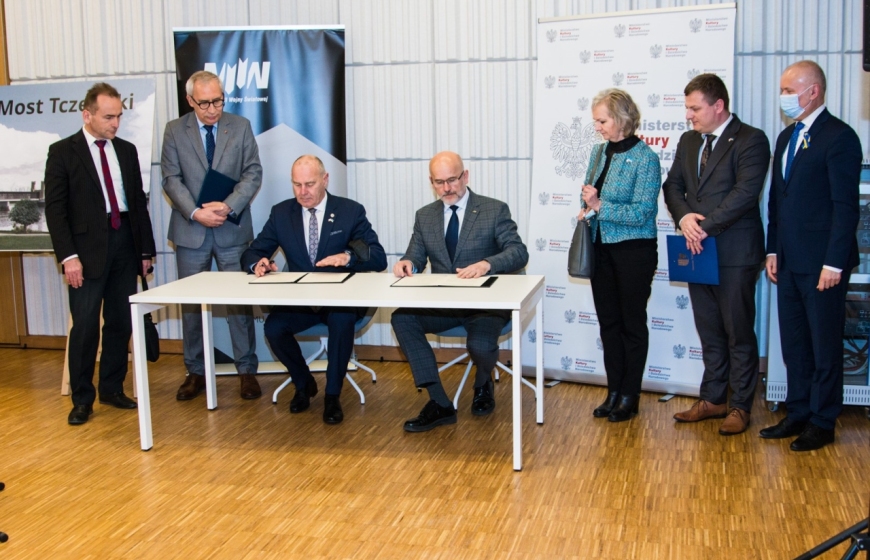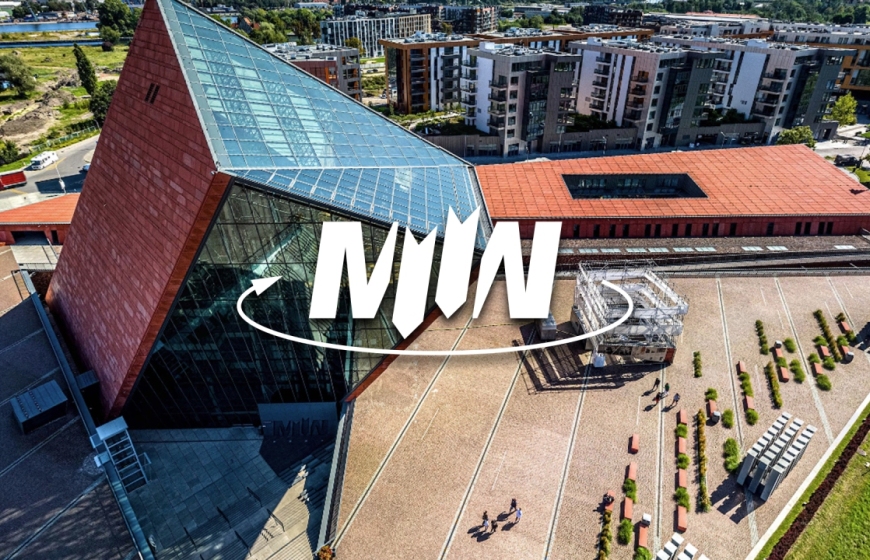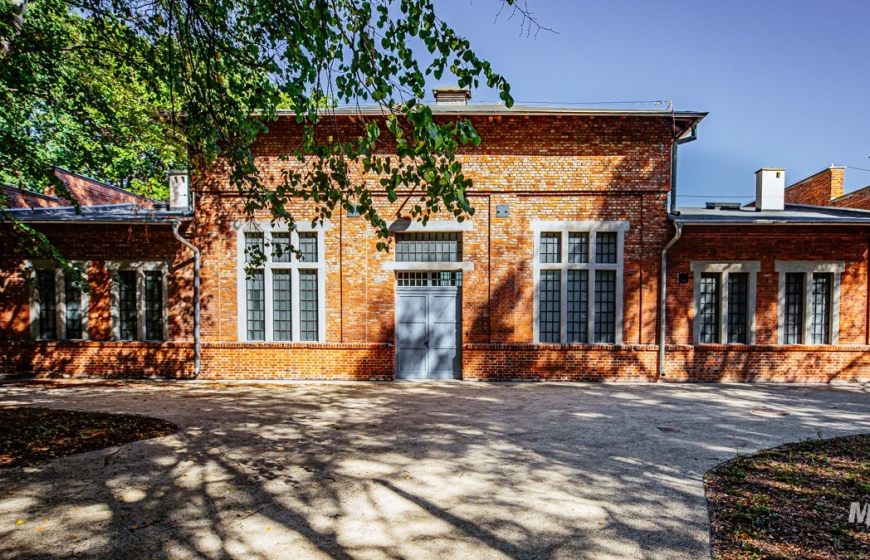Meeting with the Mayor of Tsuruga and visit to the Japanese Port of Humanity Tsuruga Museum
On the 13th of May 2019, the Director of the Museum of the Second World War in Gdańsk, Karol Nawrocki, who is currently visiting Japan, met with the Mayor of Tsuruga, Mr Takanobu Fuchikami. It was in Tsuruga harbour that the Japanese ships saving some thousand Polish children from Siberia moored in the 1920s.
The meeting also brought up the case of Japan issuing “Visas for Life” for nearly 6 thousand Polish Jews at the beginning of the Second World War and the merits of the Consul Chiune Sugihara, who in the summer of 1940 had been issuing transit visas in consular office of the Empire of Japan in Kaunas, thus saving over 6 thousand Jews. He was honoured by Yad Vashem with the Righteous Among the Nations title. Chiune Sugihara is the only Japanese to have received this honorific.
During the meeting, Karol Nawrocki, PhD, gave the Mayor a painting by Eliasz Dyrow, showing Stanisława Ulma, the eldest daughter of Wiktoria and Józef Ulma, thus presenting simultaneously the tragic story of the Ulma family, Polish heroes and Righteous Among the Nations.
Moreover, Karol Nawrocki, PhD, visited the Port of Humanity Tsuruga Museum located in the Japanese city of Tsuruga and met with Akinori Nishikawa, the Director of the Japanese Museum. It is yet another meeting of the hosts of the two museums. Last June, Karol Nawrocki, PhD, received the Director of the Port of Humanity Tsuruga Museum, Mr Akinori Nishikawa and showed him around the Museum of the Second World War in Gdańsk. Yesterday’s meeting was devoted to future possibilities and areas of co-operation between the two institutions. Karol Nawrocki, PhD, showed the agenda of the celebrations of the 80th anniversary of the outbreak of the Second World War prepared by the Museum. He also presented Lieutenant Colonel Jan Kowalewski to the participants and he talked about the Jan Kowalewski Award.
Following the meeting, Karol Nawrocki, PhD, was shown around the main exhibition, where he saw the section devoted to the events of the 1920s, when Japan saved ca. one thousand Polish children from Siberia. In Japan, the children were treated, clothed, nourished and sent to their homeland by ships. Polish children staying in Tokyo were even visited by the empress of Japan, which constituted an unprecedented event. The arrival of the Polish children to Japan aroused quite an interest at the time amongst the Japanese public opinion. Meanwhile, financial aid provided by numerous private persons ensured them great care. Most of the children, who had been evacuated from Japan, made it in 1923 through the U.S. to Gdańsk.
The story of the Polish children in Japan is closely connected with the fate of the 5th Siberian Rifle Division (also known as the Siberian Division) commanded by Colonel Walerian Czuma. The Siberian Division bravely participated in the fights between the army commanded by Admiral Kolchak and the Bolsheviks (between January 1919 and January 1920). In the wake of Kolchak’s defeat, many of the Division’s soldiers and their families were taken prisoners by the Soviets in February 1920. Poles were put in labour camps, where they were working in mines or cutting timber. Poles in Vladivostok were joined by others, who were escaping from the war and heading for the East along the Trans-Siberian Railway in search of a refuge. Polish children, who had lost their parents during the war, found themselves in a particularly grave condition.
Next part of the exhibition at the Tsuruga Port Museum is devoted to the events from the beginning of WWII. German army invaded Poland on the 1st of September 1939 and two weeks later Soviet army attacked from the East, making it impossible for the Polish Jews to escape abroad.









